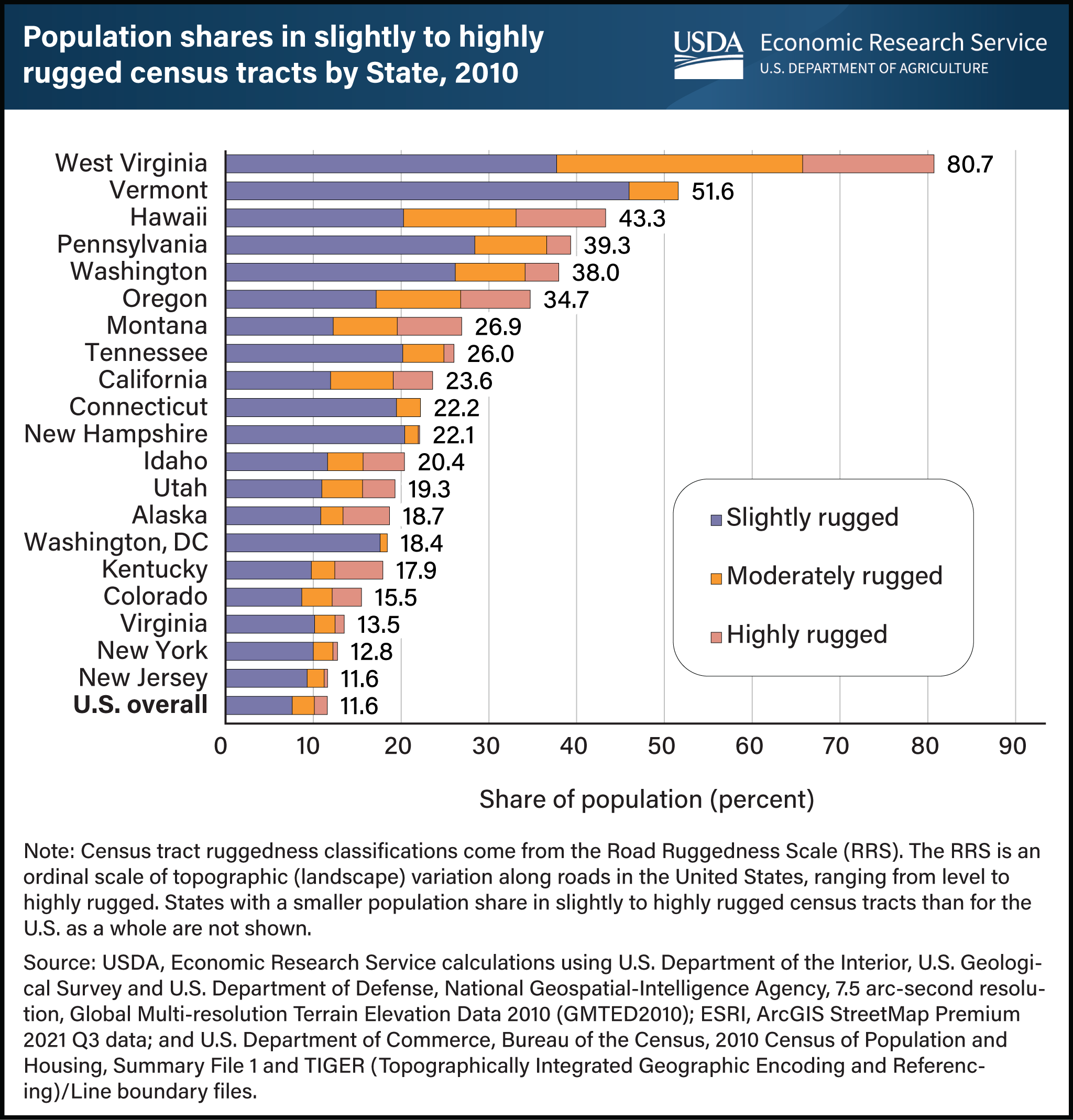West Virginia has highest share of people living in rugged terrain
- by Elizabeth A. Dobis and John Cromartie
- 11/6/2023

USDA, Economic Research Service (ERS) researchers analyzed the share of each State’s population living in rugged terrain using the Road Ruggedness Scale, a five-category measure created by ERS that classifies census tracts based on elevation changes along roads. They found that in 2010, West Virginia led the Nation with 80.7 percent of its population living in areas classified as either slightly, moderately, or highly rugged. It was followed by Vermont (51.6 percent), Hawaii (43.3 percent), Pennsylvania (39.3 percent), and Washington State (38.0 percent). In 19 States and the District of Columbia, a greater share of residents lived in slightly to highly rugged census tracts than for the Nation as a whole (11.6 percent). For most States near the top of the list, a large share of residents lived in highly rugged census tracts (the highest ruggedness category), notably West Virginia, Hawaii, Oregon, and Montana. However, despite having no highly rugged census tracts, Vermont and Connecticut still have enough residents in slightly and moderately rugged census tracts to be among the top 10 States with the highest population shares in rugged areas. While topographic variation, or “ruggedness,” is visually appealing and may spur economic growth, it can also make it more difficult to navigate land and waterways and limits space for residential and commercial expansion. Residents living in areas with rugged terrain may also require more time to travel to hospitals, schools, social services, grocery stores, and other critical destinations compared with those living in less rugged locations. This chart is drawn from data in the ERS report Characterizing Rugged Terrain in the United States, published in August 2023.

